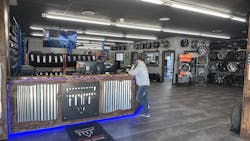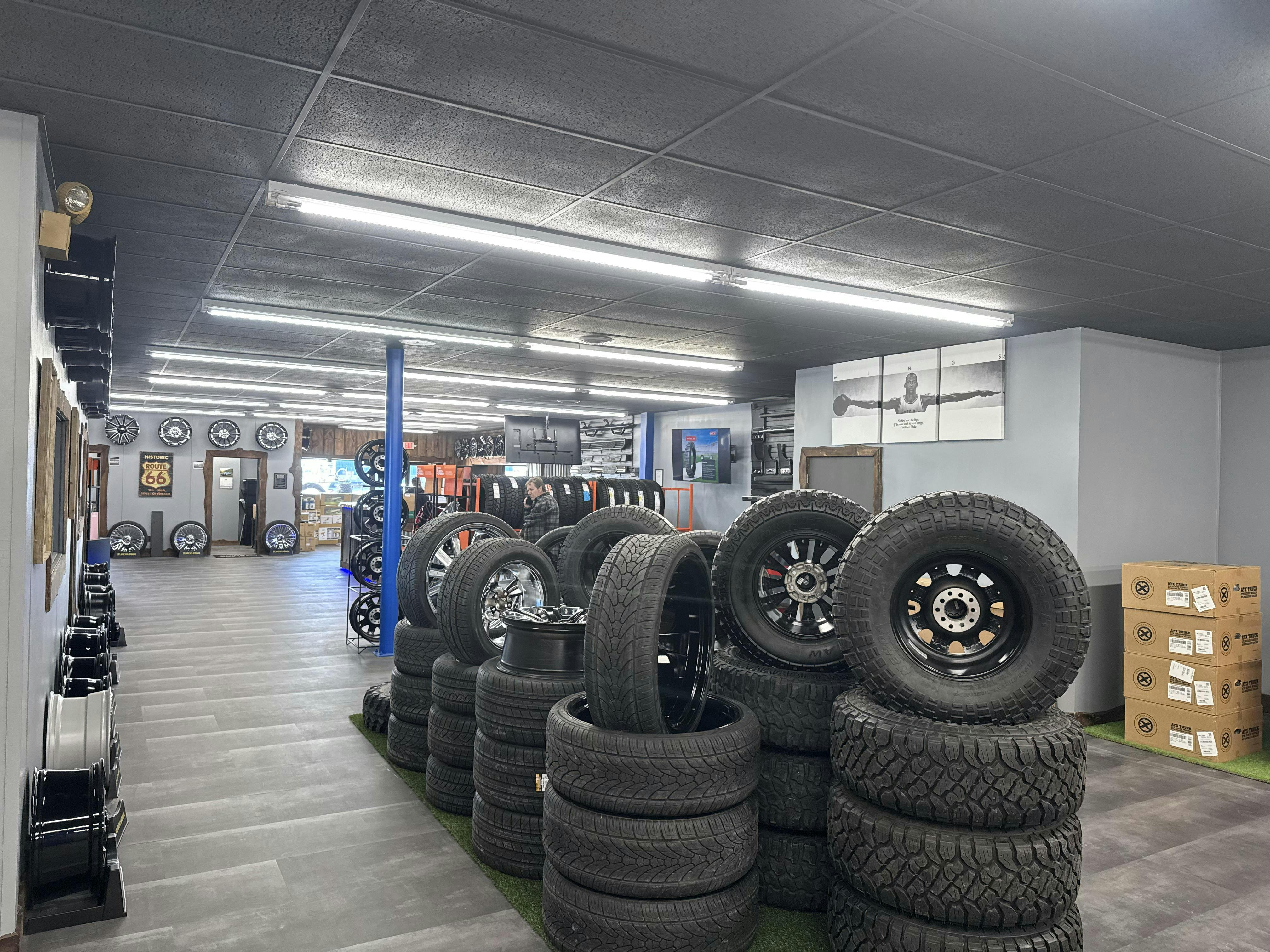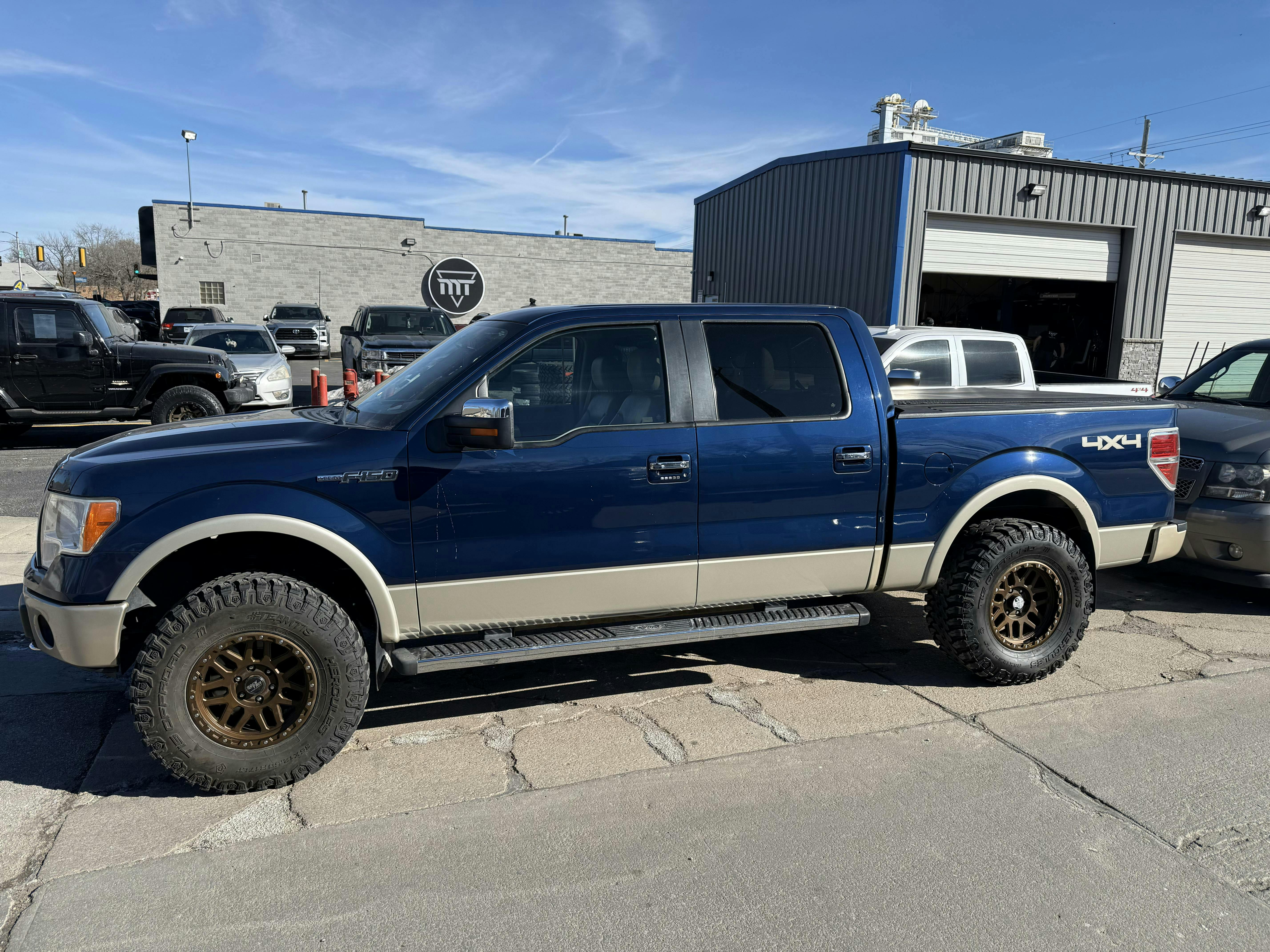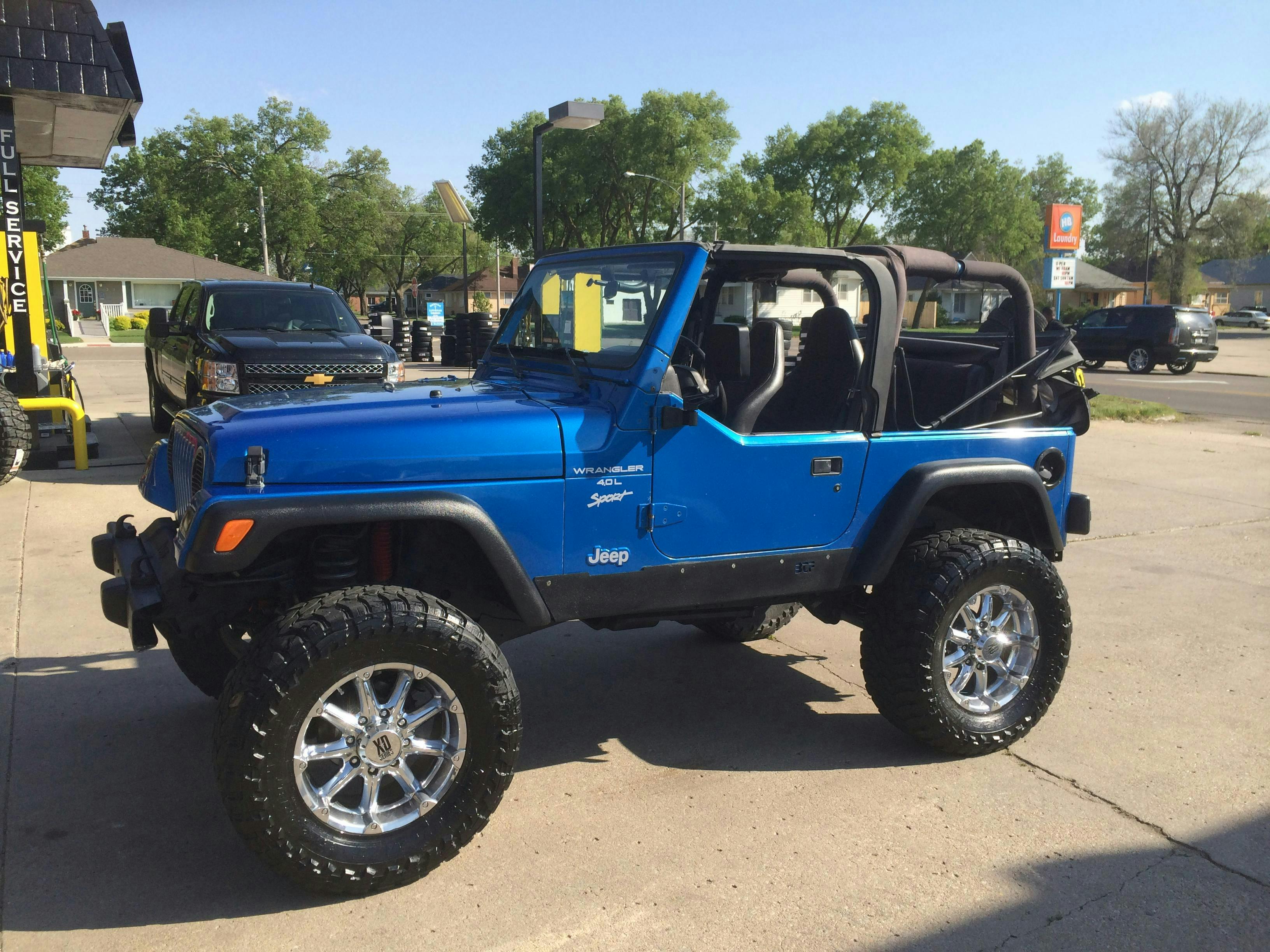When Adam Miller first started working in the tire industry 23 years ago, the highlight of his day was helping a driver customize his or her vehicle with a new tire and wheel package.
“The most exciting part was taking a standard vehicle and putting a six-inch lift and bigger wheels and tires on it — just doing the upgrades and seeing the instant gratification when it was done. And then I got the excitement from the customer. It was the pure excitement and fun of the transition and seeing the completed project.”
That excitement has endured as Miller has gone from employee to owner of his business, Miller Tire Commercial, Ag and OTR Point S.
Don’t let the name of his company fool you, though. Even though its name points heavily to the commercial tire world, that’s been a recent addition. Passenger and light truck tires, wheels and lift kits have been a steady component of his business in Grand Island, Neb., since day one.
The business has grown over time and this winter the team moved from what had been a standalone building dedicated to wheels, lift kits and other accessories into its commercial store that sits on eight-and-a-half acres. The location offers a larger showroom, additional service bays and “a very large tire storage area.”
Miller has found a captive audience of customers who want their vehicles to “stand out and be unique.”
Grand Island is a city of 50,000- plus people in central Nebraska. Some might not think of it as a hot market for wheel and tire upgrades, but Miller says, “we pull from all around the state of Nebraska.”
Miller Tire Commercial, Ag and OTR Point S typically stocks 150 sets of passenger and light truck wheels. Miller says his business is Wheel Pros’ “largest purchaser in the Midwest.” (Editors note: Wheel Pros rebranded as Hoonigan in late-2023 and later filed for bankruptcy. The company emerged from bankruptcy protection in late-2024.)
Unique but understated
Miller says the bulk of his company’s wheel work is tied to light truck fitments for pickups and SUVs.
“The vehicle of choice in Grand Island is a SUV or a pickup truck,” he notes. And in the last five or six years, those customers have transitioned to preferring a new look.
“The chrome wheel movement was really, really good in the mid-2000s. From 2015 to 2020, chrome was what everybody was going for — the flash and the shininess.” But the style has since “switched over to black and machined.”
Preferences for certain wheel styles and finishes ebb and flow.
“It goes in cycles,” Miller says.
The popular look has gone from busy to understated, with a preference for a black and milled finish, he says. At the same time, there’s been a slight adjustment in tire size preferences.
“It was big in the 22s and 24s. A lot of people put those big wheels on. It’s kind of settled in on the 20- to 22-inch market.”
Peak season is here
Miller is gearing up for another big season of wheel and tire upgrades, as well as lift kit installations. The arrival of tax refunds fuels sales each spring, he says.
“Winter is the slowest time. Not very many people are really interested in going out and putting on a $4,000 or $5,000 set of wheels with six inches of snow on the ground,” Miller says. “They’d much rather wait until the snow is gone and at least they get nine months of being able to drive without any impact from the weather on their new investment.”
And just like preferences for wheel styles and tire sizes have shifted a bit, so has the choice in lift kits.
“The big wheels and the big lifts were a big thing for a while. Everyone wanted to see how large they could get, so there were six- or eight-inch lift kits and 22- and 24-inch wheels. It’s kind of settled in now on the 20- to 22-inch wheel and then a moderate lift — a two- to three-inch lift.”
He knows that preference will likely change, too. “I’m sure the bigger lift kits will come back in style and be very popular. That’ll definitely happen. It’s just a cycle.”
Miller says a typical pickup truck driver looking to invest in larger tires, new wheels and a lift kit is spending $5,000 to $6,000.
Many of those customers want to upgrade and style the look of their vehicles, but they don’t want to lose the comfortable drive that was originally created by the original equipment manufacturer.
Miller says lift kits from BDS Suspension have become especially popular “because (BDS) keeps all the steering angles the same as the factory. Everybody wants to go up (in size) and be bigger and more aggressive, but nobody wants to have the impact and adjustment to their ride. We try to do our best to make sure that they maintain that factory ride quality.”
Miller says lift kit suppliers have made improvements to match that original equipment ride and feel. “The industry has really evolved.”
Overall, Miller thinks consumers’ preferences for a specific look have merged with other requirements that are far more utilitarian. They tell him,
“I want the look to be unique. I don’t want my truck to look like anybody else’s in town, but I still want to be able to pull it in the garage and I still want to be able to drive it down the interstate.”
Customers shopping for these stylized options don’t fit into a single category.
“We do lift kits for all ages, from 18-year-olds all the way up to 80-year-olds — everybody across the board.
Tire styles matter
Miller gives tire manufacturers credit for putting added focus on the looks of their products’ sidewalls.
“The tire companies have done a really good job of getting out there and understanding what the customer wants,” he says. “What the customer wants is an aggressive aesthetic from the sidewall appearance.”
It has boiled down to combining “a mud-terrain look” on the sidewall with “the ride quality of an all-terrain tire,” he explains.
Miller says if could give tiremakers any advice, he’d have them always consider the look of tire sidewalls and invest more there.
“More design on the sidewalls is going to be really important for that customer that’s looking for the wheel and tire (package). The way the tire handles and the traction of the tire are incredibly important, but the initial response that (tire buyers) have is the look of the sidewall.
“Really making sidewalls stand out is a big buying piece. It’s definitely one that can steer somebody” when making a buying decision.
If customers are so focused on the look, when does the conversation turn to price?
“I think the price is important. The features or benefits though outweigh the price,” says Miller.
“If you understand from a sales perspective and an installer perspective the quality that’s going into it and you can relay that to the customer to gain their interest, the price point becomes (less) existent in their decision-making process.”
Miller Tire Commercial, Ag and OTR Point S sells light truck tires at every price point, with its top brands being Nitto, Michelin, Cooper and Blackhawk.
The Blackhawk tire is the lowest price. Miller credits that to being a result of Point S buying it direct from the manufacturer as part of its membership in the Tire Alliance Group.
“It has been outstanding for us. They do a really good job of building (and) filling the areas across the product screen, from the highway (terrain) to all-terrain (AT) to that rugged-terrain tire. The AT tire is the most popular mover in that lineup.
About the Author
Joy Kopcha
Managing Editor
Joy Kopcha joined Modern Tire Dealer and Auto Service Professional as senior editor in 2014 after working as a newspaper reporter for a dozen years in Kansas, Indiana and Pennsylvania. She was named managing editor of MTD and ASP in 2022, and took on that same role with Motor Age in 2024.
She is an award-winning journalist, including in 2023 when she was named a Jesse H. Neal Awards Finalist.
Don't miss any of her articles. Sign up for MTD's newsletters.




